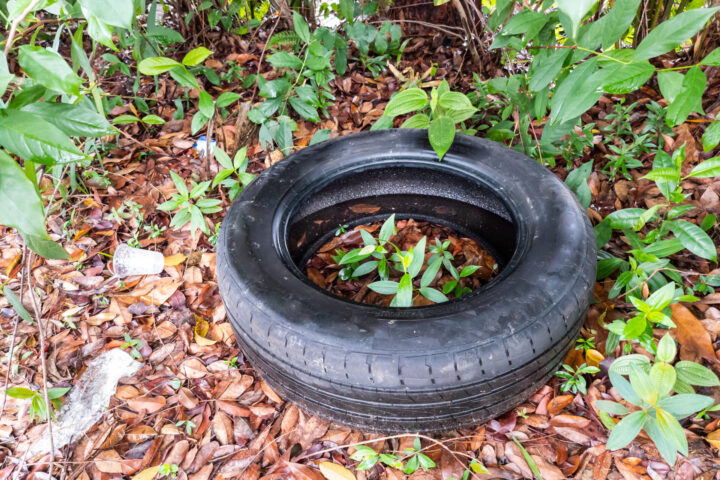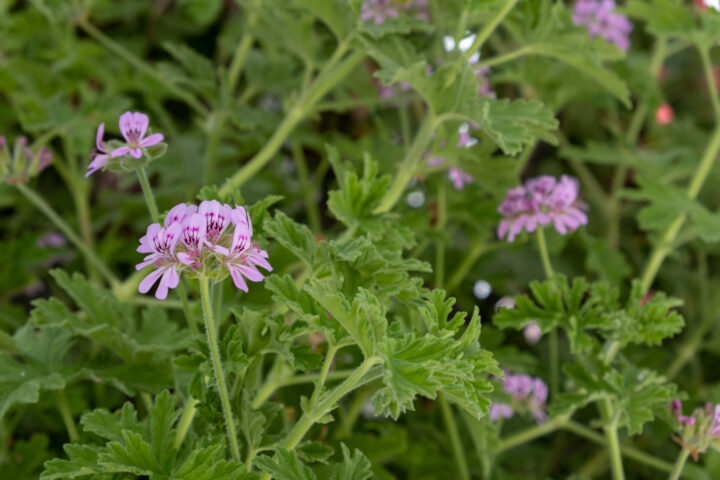Why did God make mosquitoes? They suck (literally and figuratively).
Mosquitoes are not just annoying – they can also put your health at risk by transmitting diseases. That’s why it’s important to take proactive steps to reduce mosquito breeding sites in your yard and protect your loved ones. Let’s discuss practical tips and tricks for identifying and eliminating pesky mosquito breeding spots so you can enjoy a comfortable and worry-free outdoor space!
Identifying Mosquito Breeding Sites
A. Standing Water Sources
Mosquitoes lay their eggs in standing water, which makes these areas prime breeding sites. Unused containers and debris in your yard can collect water. Common sources of standing water in your yard include:
- Irrigation leaks and puddles: Just one leaky tap or misaligned nozzle can create puddles and muddy areas that mosquitos love – who wants to pay the water bill for that?
- Clogged gutters: Clogged gutters can hold standing water, which can provide a breeding ground for mosquitoes.
- Natural hollows in trees and rocks: Water can accumulate in natural hollows, providing a breeding ground for mosquitoes.
B. Containers and Debris
Unused containers and debris in your yard can collect water and become potential mosquito breeding sites. Be on the lookout for:
- Bird baths: Standing water in bird baths can be a prime breeding spot for mosquitoes.
- Plant saucers: Water that collects in plant saucers can attract mosquitoes looking to lay their eggs.
- Pet water dishes: Make sure to change your pet’s water dish frequently to prevent mosquitoes from breeding.
- Buckets, cans, and pots: These items can collect water and become prime breeding spots for mosquitoes.
- Kids toys: Toys left outside can collect water and become potential mosquito breeding sites if not stored properly.

C. Overgrown Vegetation
Dense vegetation provides a cool, moist environment that mosquitoes love. Areas of concern include:
- Tall grasses: Mosquitoes can hide in tall grasses during the day and come out to feed at night. You should mow regularly as part of a holistic pest management program.
- Shrubs and bushes: Shrubs and bushes provide shade and moisture, making them attractive to mosquitoes.
- Dense groundcovers: Dense groundcovers can trap moisture, creating the ideal environment for mosquito breeding.
- Greenbelt spaces: Greenbelt spaces can be a haven for mosquitoes, as they often contain standing water and dense vegetation. It’s great to live near a greenbelt, but it can come at a cost.

How to Eliminate Mosquito Breeding Sites
A. Managing Standing Water
To help prevent mosquitos, minimize their breeding opportunities. Take the following steps to manage standing water:
- Regularly check and maintain your irrigation system: Make sure your valuable water is going to the plants and grass that actually need it. Fix leaks and overspray to avoid puddles and standing water.
- Install mosquito dunks in ponds or other water features: Install mosquito dunks in ponds or other water features to prevent mosquito larvae from developing.
- Ensure proper drainage in your yard: Ensure proper drainage in your yard by clearing debris from gutters and addressing any low spots that collect water.
- Filling natural hollows in trees and rocks: Fill natural hollows in trees and rocks with soil or sand to eliminate stagnant water.
B. Removing Containers and Debris
Keep your yard tidy and free of potential mosquito breeding sites by:
- Regularly empty and clean water containers: Empty and clean water containers like bird baths and pet water dishes on a regular basis.
- Disposing of unused items: Dispose of unused items like buckets, cans, and old tires.
- Storing containers upside-down or in a covered area: Store containers upside-down or in a covered area to prevent water collection.
C. Maintaining Vegetation
Regular yard maintenance can help reduce mosquito-friendly habitats and help prevent mosquitos:
- Mow the lawn regularly: Mow the lawn regularly to keep grass at a manageable height.
- Prune shrubs and bushes: Prune shrubs and bushes to promote air circulation and reduce moisture.
- Keep groundcovers well-trimmed: Keep groundcovers well-trimmed to prevent dense growth.
Central Texas Mosquito-Repellant Plants
Beyond reducing breeding sites, you can also use several Central-Texas-friendly plants to help prevent mosquitos. Check out our guide to mosquito-repellant plants to learn more.

Conclusion
By taking these steps to reduce mosquito breeding sites in your Central Texas yard, you can create a more comfortable and safe outdoor environment for your family and pets. Remember, mosquito control is an ongoing process that requires regular maintenance and vigilance. Enjoy your mosquito-free outdoor space!
This post was originally published May 5, 2023.

